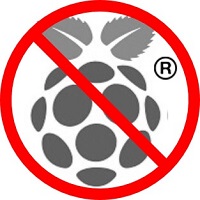Bees Shield
Introduction

Bees_Shield will make interfacing multiple Bee-style (XBee, GPRS Bee, Bluetooth Bee and etc) easier than ever before. Aside from two Bee-style 20p 2.0 pitch sockets, it also has a large prototyping area, and a customizable software serial port for easier prototyping.
Versions
| Revision | Descriptions | Release |
|---|---|---|
| v2.12 | Initial public release | June 08, 2010 |
Features
- Dual Bee type socket
- 3 indicator LED(ON/Sleep, RSSI, ASSOC) for each Xbee
- Full size with free drills
- Reset button for each Xbee
- Reset button for base board
- Provide maximal 500mA under 3.3V
- Full break out for each Bee
- Switchable of communication with FTDI-USB /Base board
Hardware Overview

Platforms Supported
Getting Started
Work with Bee1
Connection
- Plug the Xbee module into the Bee 1 socket, setting the jumpers as below. We use Bee1 SoftwareSerial for communication.
| Arduino Pins | Bee1 Pins |
|---|---|
| Digital Pin7 | Bee1_TX |
| Digital Pin8 | Bee1_RX |
- Plug Bees Shield into Arduino.
- Connect Arduino to PC via a USB cable.
Software
- Copy and Upload the code to Ardunio.
#include <SoftwareSerial.h>
SoftwareSerial mySerial(7, 8);
void setup() {
Serial.begin(9600);
Serial.println("Goodnight moon!");
// set the data rate for the SoftwareSerial port
mySerial.begin(9600);
mySerial.println("Hello, world?");
}
void loop() {
// run over and over
if (mySerial.available())
Serial.write(mySerial.read());
if (Serial.available())
mySerial.write(Serial.read());
}
- When it’s uploaded, open the serial to monitor.
Work with Bee2
Connection
- Plug the RFbee module into the Bee 2 socket, toggle switch to USB side.
Note
Toggle switch to the Atmega’s side if you are not uploading a sketch to the Bee2. It does NOT work if the arduino is using ATmega168 – we need at least ATmega328 to pass serial communication through.
- Plug Bees Shield into Arduino.
- Connect Arduino to PC via a USB cable.
Software
- Please Copy and Upload the code to Ardunio to disable Uart0 port of Atmega IC first.
void setup() {
DDRD=0x00;
}
void loop() {}
Wireless Arduino programming with Bee2
Connection
- Solder the JP1 block on the board for wireless programming.
- Plug Bees Shield into Arduino.
Software
- Download Xbee setting profile to transmitter Xbee by using X-CTU.
- Let’s use the wireless programming.
Expansion function
- First we have to solder two 8-pin female headers and two 6-pin female headers on the Bees shield.
- After the expansion we can insert small shield like music shield on the Bees shield and we can control it wirelessly.

Resources
- [Eagle] Bees_Shield Eagle File
- [PDF] Bees_Shield schematics
- [PDF] Bees_Shield PCB
- [Tools] Xbee setting profiles
| Arduino | Wio | BeagleBone | Raspberry Pi | LinkIt ONE |
|---|---|---|---|---|
 |
 |
 |
 |
 |
Caution
The platforms mentioned above as supported is/are an indication of the module's hardware or theoritical compatibility. We only provide software library or code examples for Arduino platform in most cases. It is not possible to provide software library / demo code for all possible MCU platforms. Hence, users have to write their own software library.
Help us make it better
Welcome to the new documentation system of Seeed Studio. We have made a lot of progress comparing to the old wiki system and will continue to improve it to make it more user friendly and helpful. The improvement can't be done without your kindly feedback. If you have any suggestions or findings, you are most welcome to submit the amended version as our contributor via Github or give us suggestions in the survey below, it would be more appreciated if you could leave your email so that we can reply to you. Happy Hacking!

